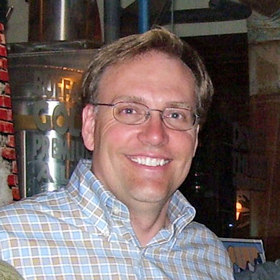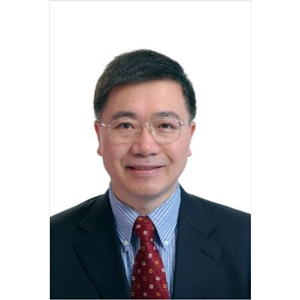Plenary Lectures
DAY 1: November 30
→ DAY 3: December 02 13:00-13:45 Tokyo Time
DAY 2: December 01
DAY 3: December 02
PL2
Plenary Lecture 2
Chairperson: Mutsuo Hidaka
AIST
1 Dec. 7:45-8:30
Room D / Tokyo Time
PL2
Superconductive Electronics for Quantum-based Metrology
*Sam Benz1
- National Institute of Standards and Technology, Boulder, Colorado, 80305 USA1

Sam Benz leads the Superconductive Electronics Group of NIST that develops state-of-the-art quantum voltage standard systems, technology, and measurement techniques for AC and DC voltage and primary electronic thermometry, which NIST provides to U.S. Industry and national and international measurement laboratories. The group also has research programs in superconducting high-speed computing and rf communications.
Dr. Benz grew up in Dubuque, Iowa, USA, received his B.A. from Luther College, Decorah, IA, in 1985 and his Ph.D. degree in physics from Harvard University in 1990. He is a Fellow of NIST, the American Physical Society (APS) and the Institute of Electrical and Electronics Engineers (IEEE). He has four patents and three U.S. Department of Commerce Gold Medals and received the 2016 IEEE Joseph F. Keithley Award in Instrumentation and Measurement.
PL3
Plenary Lecture 3
Chairperson: Nicholas Long
Victoria University of Wellington
1 Dec. 14:00-14:45
Room B / Tokyo Time
PL3
Advances in high-field iron-based superconducting wires and tapes
*Yanwei Ma1,2
- Institute of Electrical Engineering, Chinese Academy of Sciences, China1
- University of Chinese Academy of Sciences, China1

Yanwei Ma received his PhD degree from Tsinghua University in 1996 and then worked as a post-doctoral fellow at University of Science and Technology Beijing (USTB). Following research associate positions at Institute for Materials Research, Tohoku University (Sendai, Japan), National Institute for Materials Science (Tsukuba, Japan) and Universite de Rennes 1 (France), he joined the Institute of Electrical Engineering, Chinese Academy of Sciences in 2004 as a full-time professor. He is Director of the Superconducting Materials Department at IEE-CAS, a large research group that is mostly devoted to the development of MgB2 and iron-based superconductor wires. He was awarded the "2019 ESAS Award for Excellence in Applied Superconductivity" for outstanding contributions to the development of Fe-based wires. He has published more than 300 refereed SCI journal papers. He has given ~70 invited talks at international conferences. He is a board member of Physica C and Supercond. Sci. Technol., Associate Editor of the Superconductivity News Forum, and board member of International Cryogenic Materials Conference (ICMC).
PL4
Plenary Lecture 4
Chairperson: Hiraku Ogino
AIST
1 Dec. 17:15-18:00
Room C / Tokyo Time
PL4
Recent progress on unconventional superconductivity in iron-based and other superconductors
*Hai-Hu Wen1
- National Laboratory of Solid State Microstructures and Department of Physics, Center for Superconducting Physics and Materials, Nanjing University, Nanjing1

Senior professor of Physics Department, and Director for Center of Superconductive Physics and Materials at Nanjing University, China. He is a distinguished Yangtze River Scholarship Professor, APS fellow. He has published more than 400 scientific papers in internationally recognized journals, received over 10000 citations, owned a h-index of 56. He has several important contributions on materials, pairing mechanism, vortex dynamics of unconventional superconductors, including cuprate and iron based superconductors. He has delivered more than 100 speeches or invited talks at international conferences. He has received several important awards including two times of China National Awards on Natural Sciences (first grade in 2013, second grade in 2004); the Asian Achievement Award by the over-sea Chinese Physical Association (2010), etc.
PL5
Plenary Lecture 5
Chairperson: Naoyuki Amemiya
Kyoto University
Chairperson: Rod Badcock
Victoria University of Wellington
2 Dec. 10:45-11:30
Room A / Tokyo Time
PL5
ARPA-E project to develop next generation of electric propulsion system
*Parag Kshirsagar1
- Raytheon Technologies1

Bio:
Dr. Parag Kshirsagar: Senior Member IEEE, Member AIAA, and an Associate Director with Raytheon Technologies Research Center (RTRC), East Hartford, Connecticut since 2006. He is currently leading a multi-disciplinary team on electrification of aerospace and defense applications with programs related to extreme high power electrified aircraft propulsion, cryogenically cooled motors and drives, and high voltage power distribution systems. He has led programs on flight critical electromechanical systems for wings, rotors and engine applications as well as high speed magnetic bearing technology development for high power chiller applications.
Prior to RTRC, he worked for one year at Yaskawa Electric America, Illinois. He received his Doctorate degree in Electrical Engineering from Virginia Polytechnic and State University (Virginia Tech), Blasksburg, Virginia and Masters degree from Tennessee Technological University, Cookeville, Tennessee. He got his Bachelor’s degree in Industrial Electronics from University of Pune, Pune, India.
PL1
Plenary Lecture 1
Chairperson: Atsutaka Maeda
The University of Tokyo
2 Dec. 13:00-13:45
Room C / Tokyo Time
PL1
Towards Ambient Superconductivity: Novel Hydrogen-Rich Materials
*Ranga Dias1
- University of Rochester1

Ranga Dias received his B.S. in Physics from the University of Colombo, Sri Lanka in 2006 and his Ph.D. in Physics from Washington State University in 2013. He joined the University of Rochester as an Assistant Professor of Physics and Astronomy and Mechanical Engineering after a postdoctoral fellowship in the Department of Physics at Harvard University, where he investigated the quantum phenomena in hydrogens at extreme conditions at Silvera’s Lab. Dias is today's leading scientist in high pressure superconductivity. Selected by Time magazine in February for its 2021 Time100 Next annual list of 100 individuals who are shaping the future of their fields and defining the next generation of leadership, Dias was in the “Innovators” category for his creation of a room temperature superconductor at high pressures. Dias has received several awards including the National Science Foundation CAREER Award, recognizing his work in superconductivity.
